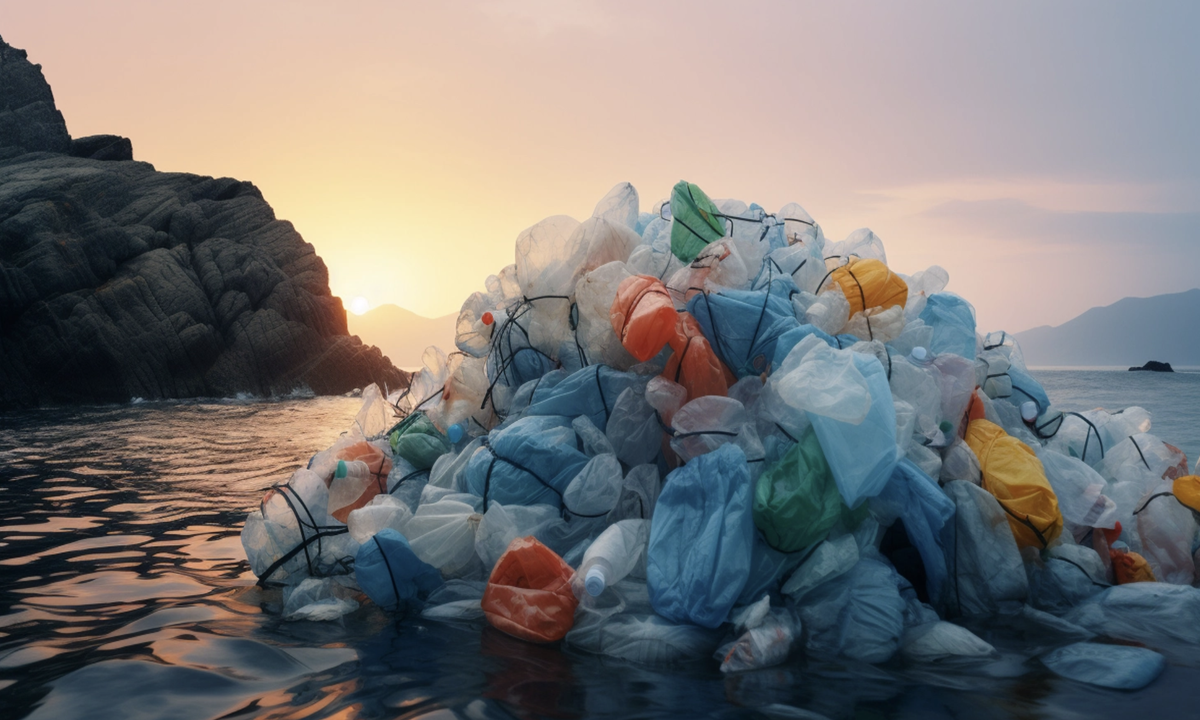Nuclear Science Tackles Plastic Waste Through Innovation and Global Collaboration
Radiation isn’t just for creating new materials — it’s also being used to upgrade or “upcycle” existing plastic waste into more valuable, durable forms.

Plastic is a staple of modern life — found in everything from food packaging and water bottles to electronics, clothing, and even medical devices. Yet despite its ubiquity, plastic remains a serious environmental hazard. The world produced over 400 million tonnes of plastic waste in 2024, with a mere 9% recycled, while the rest ends up polluting landfills, waterways, oceans, and even entering the food chain as toxic microplastics.
Amid the mounting crisis of plastic pollution, a surprising ally has emerged: nuclear science. Through its innovative NUTEC Plastics initiative, the International Atomic Energy Agency (IAEA) is leveraging nuclear technologies not just to study and trace microplastic contamination, but also to enhance recycling processes and even develop biodegradable plastic alternatives. This program marks a cutting-edge evolution in the fight for environmental sustainability.
Understanding the Plastic Problem
Plastic, by nature, is not biodegradable. Unlike organic materials, it doesn’t decompose — it simply breaks down into smaller particles over time. These microplastics have been found in oceans, soil, air, and even human organs. Around 80% of marine plastic pollution is traced back to land-based sources such as urban waste, mismanaged landfills, and runoff, making interventions on land vital to cutting pollution at its source.
While most public and private sector efforts focus on collection and recycling, few offer solutions for materials that are hard to process or have already infiltrated ecosystems. This is where nuclear technologies step in with transformative possibilities.
NUTEC Plastics: A Nuclear Innovation for a Global Problem
Launched in 2021, the Nuclear Technology for Controlling Plastic Pollution (NUTEC Plastics) initiative aims to help countries monitor, reduce, and ultimately eliminate plastic waste from the environment, particularly the oceans. It does this by applying two primary streams of nuclear science:
1. Creating Sustainable, Bio-Based Plastics
Using radiation chemistry, scientists can develop biodegradable and recyclable plastics from renewable sources. Unlike petroleum-based plastics, these new materials can degrade naturally without leaching toxic substances into ecosystems. More importantly, the radiation process requires no harmful chemicals or high energy input, making it a form of green chemistry.
This approach also supports a circular economy model — turning organic waste into plastics, which can then be reprocessed or safely decomposed, rather than ending up in landfills.
2. Upcycling Plastic Waste into Durable Materials
Radiation isn’t just for creating new materials — it’s also being used to upgrade or “upcycle” existing plastic waste into more valuable, durable forms. Examples include:
-
Reinforcing concrete with recycled plastics, reducing cement usage and carbon emissions.
-
Using radiation-assisted pyrolysis to convert plastics into fuels, waxes, and chemical additives.
-
Improving sorting and separation of plastic types, helping recycling plants operate more efficiently.
Safety and Radiation Myths Debunked
A common concern is whether plastics treated with radiation become dangerous. The answer is an emphatic no. Radiation used in this context is non-ionizing in the final material — the treated products are not radioactive. Just like receiving a medical X-ray, the radiation passes through or affects the material during treatment, but leaves no residual radioactivity. These materials are safe, clean, and environmentally sound.
Global Collaboration: From Pilot Projects to Practical Solutions
NUTEC Plastics is already yielding results. The IAEA currently works with 52 member states, including nine pilot countries, all of which are progressing through the Technology Readiness Level (TRL) scale — a 9-point system used globally to measure a technology’s maturity.
Examples of ongoing success stories include:
-
Indonesia and the Philippines: Developing wood-plastic composites for construction.
-
Malaysia: Using plastic waste as a source of fuel.
-
Argentina: Producing durable railroad sleepers from recycled plastics, which are undergoing rigorous field testing.
These initiatives are not just experimental; they are foundational steps toward large-scale commercialization, some of which are expected to achieve full deployment as early as 2026.
Celina Horak: A Life Dedicated to Green Innovation
At the forefront of this movement is Celina Horak, Head of the IAEA’s Radiochemistry and Radiation Technologies Section. With over 30 years of experience working with ionizing radiation, Horak is a passionate advocate for science as a driver of environmental resilience.
“Science should serve as a catalyst for meaningful, lasting change,” she says. “Plastic upcycling and alternative material development allow us to apply science in the most impactful way — by safeguarding our ecosystems and building a sustainable future.”
Horak presented these developments at ICARST2025 — the International Conference on Applications of Radiation Science and Technology — held in Vienna in April, where the NUTEC Plastics initiative was showcased as a flagship for climate-friendly innovation.
The Road Ahead
As the plastic pollution crisis escalates, nuclear science offers not just hope, but practical, scalable solutions. The NUTEC Plastics initiative represents a unique blend of innovation, international collaboration, and environmental responsibility. With more pilot countries joining, technologies maturing, and awareness growing, the IAEA is shaping a future where plastic waste no longer dictates the fate of our oceans, ecosystems, and communities.










